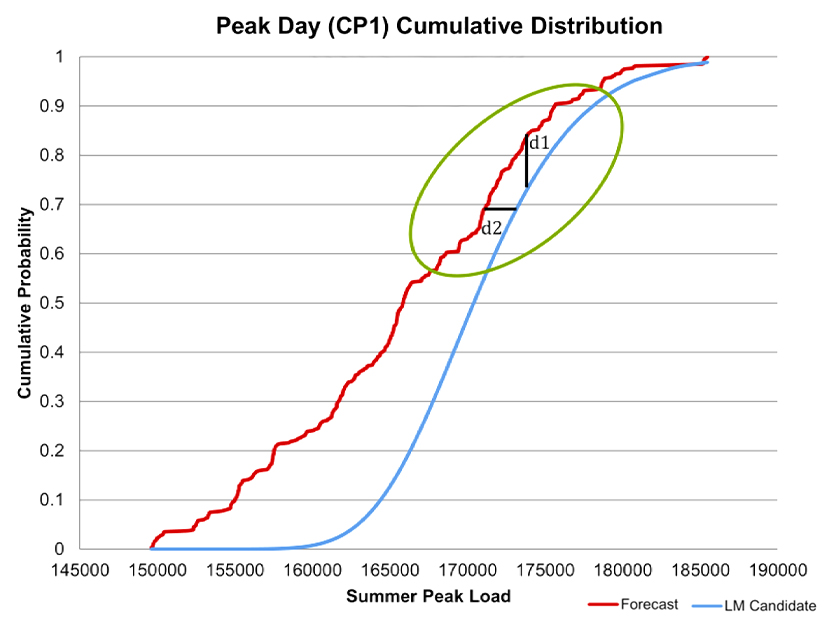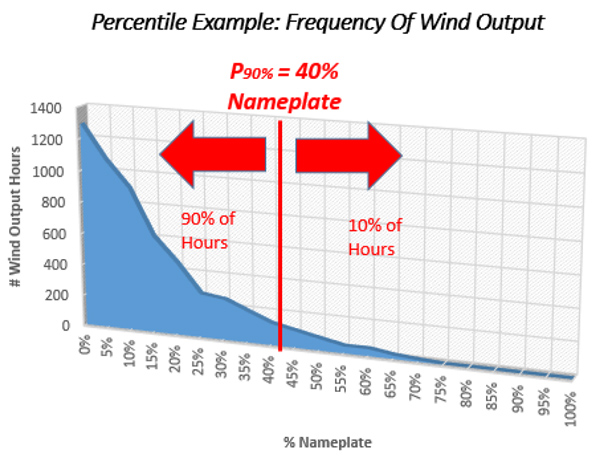
Consumers’ Consultant Says PJM Load Model Based on ‘Fiction’
VALLEY FORGE, Pa. — A consultant representing consumer advocates criticized PJM’s proposed load model for the 2022 Reserve Requirement Study, telling the RTO’s Planning Committee on July 12 that it would result in the over-procurement of about 1,000 MW.
Economist James Wilson — who represents advocates in New Jersey, Pennsylvania, Maryland, Delaware and D.C. — said that PJM is underestimating the assistance it could expect from its neighbors during peak loads because it models MISO, NYISO, the Tennessee Valley Authority and SERC Reliability’s VACAR subregion as a single entity it terms the “World.”
“The ‘World’ is a fiction,” Wilson said. “No other RTO aggregates regions as diverse as New York and VACAR and MISO and TVA.”
Wilson leveled his criticism after PJM’s Patricio Rocha Garrido presented the RTO’s proposal to use a load model from 2000-2010 for the capacity auction for delivery year 2026/27. The PC will be asked to endorse the selection at its August meeting.
Rocha Garrido said PJM considered 136 load models in its analysis, which he said is necessary because the coincident peak distributions from the RTO’s load forecast cannot be used directly in PRISM, the loss-of-load-expectation software.
Under a method approved by the PC in 2016, PJM seeks to match its forecasted peak day distribution with the historical diversity from the World’s peak.
In this year’s analysis, PJM switched the World peak to the fourth week in July so that the RTO — projected to peak in the third week of the month — tops out in the same month but not the same week as the World. The switch was made to match the historical diversity between PJM and World peaks, Rocha Garrido said.
Wilson said PJM made “very arbitrary” load choices in deciding on a model that has a 99% match between PJM’s and the World’s “per-unitized” peaks. “In previous years it’s always been 97% or 95%,” he said, noting that TVA peaked in the same day as PJM in only four out of the 23 last years, while NY, MISO and VACAR peaked in the same day as PJM in only seven or eight.
The four neighbors averaged more than 7,000 MW below their peaks at the time of the PJM peak — 3.9% of the PJM peak — over the 23 years, Wilson said. He said the choice would result in about a 1,000-MW increase in the reliability requirement. By combining the four neighboring regions, PJM is “pretending they would help each other rather than PJM,” Wilson said.
Michael Cocco, of Old Dominion Electric Cooperative (ODEC), asked PJM to provide a comparison of the individual regions’ peaks against its peaks.
Rocha Garrido said the RTO had conducted analyses that looked at the neighboring reasons separately and got “similar results.”
“The data supports 99% rather than 97%,” he said.
PJM’s Tom Falin, chair of the Resource Adequacy Analysis Subcommittee (RAAS), also defended the choice, saying the diversity between PJM and the World was less than 3% in 20 of the last 23 years.
“This is largely a judgment call in the end,” he acknowledged, saying there was no formula for determining the capacity benefit of PJM’s ties with its neighbors.
Falin also said not all of PJM’s assumptions were conservative, noting that PRISM assumes no transmission constraints within any of the regions. He also questioned whether other regions would call on demand response — which figures into their capacity calculations — to help PJM.
Wilson said he will make a presentation on his proposed changes to the load model at the next meeting of the RAAS on Aug. 3.
‘Time to Get Involved’ in Capacity Interconnection Rights for ELCC Resources
PJM’s Brian Chmielewski provided an update on the PC’s special session on capacity interconnection rights (CIRs) for effective load-carrying capability (ELCC) resources such as renewables, which cannot run at their maximum output for more than 24 hours.
CIRs set an upper bound on the amount of installed capacity attributed to a generation capacity resource.
At the June 24 meeting, stakeholders discussed competing proposals from PJM, LS Power, Global Infrastructure Partners’ Eolian and economist Paul Sotkiewicz of E-Cubed Policy Associates.
The group originally planned a final review of the proposals for this Wednesday, followed by a nonbinding poll. But the meeting was postponed until late August to allow for more offline discussions to forge compromises, Chmielewski said.
A first read is expected no sooner than the September PC meeting, with the new rules implemented for the 2025/26 Base Residual Auction.
“Now is the time to get involved before we get into polling,” Chmielewski said.
Informational Update on NOPRs
Members received updates on FERC’s Notices of Proposed Rulemaking on generator interconnection procedures (RM22-14), transmission system planning performance requirements for extreme weather (RM22-10) and a requirement that transmission providers submit one-time informational reports on extreme weather vulnerability assessments, climate change and electric system reliability (RM22-16).
PJM has planned two workshops on the extreme weather planning NOPR: one on July 21 to provide an update on its preliminary plans for its response and to solicit input from stakeholders, and one Aug. 12 to discuss the final draft response.
The RTO has previously recommended that FERC address resilience concerns by requiring a new transmission driver covering gas-electric vulnerabilities, reducing the number of critical grid facilities and strengthening infrastructure through storm hardening, winterizing generation resources and infrastructure redundancy.
ODEC’s Cocco said he hoped PJM would offer comments supporting its role as a “thought leader on gas-electric coordination.”
Generator Deliverability Education
PJM transmission planning engineer Jonathan Kern gave an update on the RTO’s proposed changes to generation deliverability testing.
Kern said the testing procedures “have been relatively unchanged for many years” despite the increased variability in dispatches because of the spread of renewables.
Among the changes is the grouping of resource types into three “block dispatches” based on their economics, with block 1 containing the units with the lowest offer prices (nuclear, wind, solar, hydro, pumped storage and other renewables); the more expensive block 2 (coal and combined cycle gas); and the most expensive, block 3 (IC/CT/ST oil and gas). “It better describes how PJM operates,” Kern said.
PJM also plans to redefine the “light load” period to include 10 a.m.-3 p.m. where the coincident peak load is between 40 and 60% of the annual peak for historical generation data necessary to represent the 50% load level.
“Solar is putting out large amounts of energy during the daytime. That’s completely unaccounted for” in PJM’s current modeling, Kern said.
 Percentiles represent the share of hours with output below a particular level. This example shows that onshore wind is generating 40% or less of nameplate capacity in 90% of the hours. | PJM
Percentiles represent the share of hours with output below a particular level. This example shows that onshore wind is generating 40% or less of nameplate capacity in 90% of the hours. | PJMPJM is also introducing the concept of “helpers” (generation with a negative DFAX, for which a decrease in the generation output increases the loading on a flowgate under study) and “harmers” (those with a positive DFAX, meaning a boost in generation would increase loading on the flowgate).
The new rules also will include more wind and solar in base case dispatches, with fixed solar rising from 38% to 47 to 55% of nameplate capacity in summer. Onshore wind would increase from 13% to 16 to 20%, and offshore wind would jump from 30% to 33 to 38%.
The RTO also plans to consider the impact of wind sited in MISO in both its light-load and winter tests. “Essentially, we’re looking at: What are the loopflows that would result from those wind units being dispatched at higher levels in MISO?” Kern explained.



